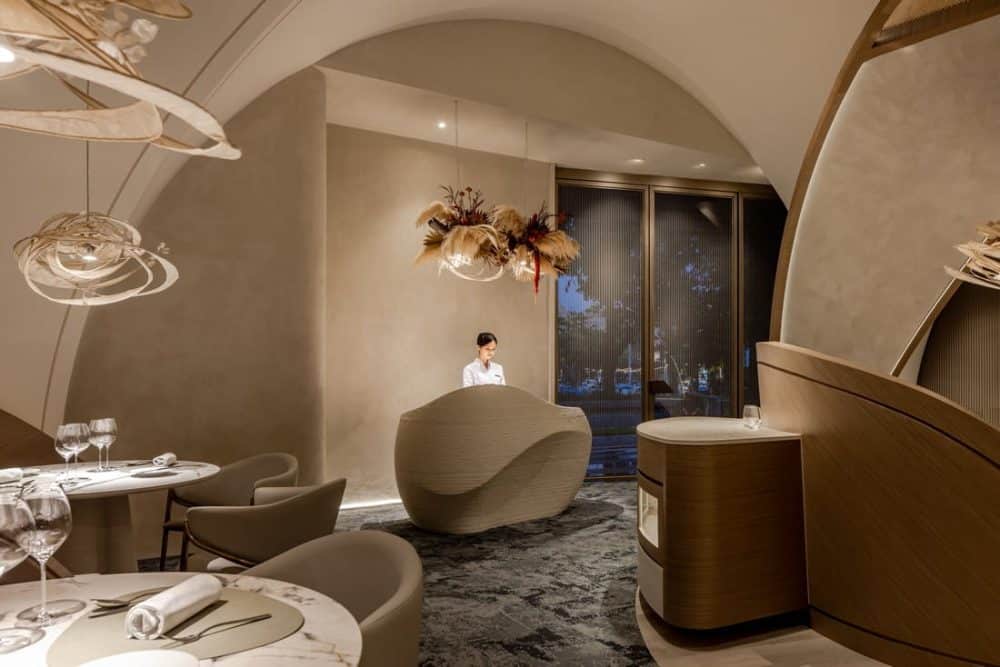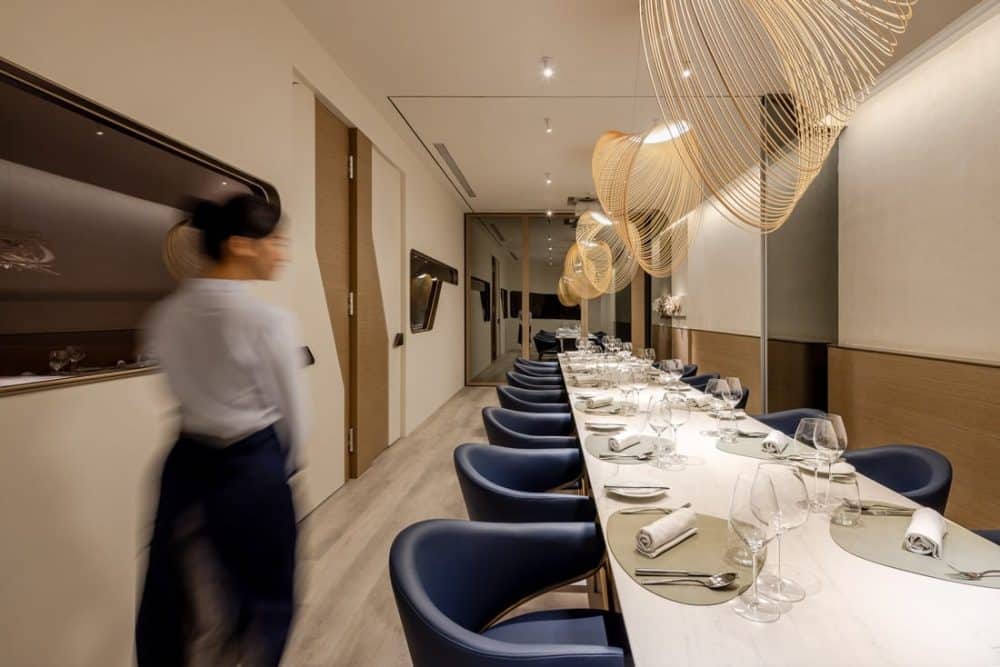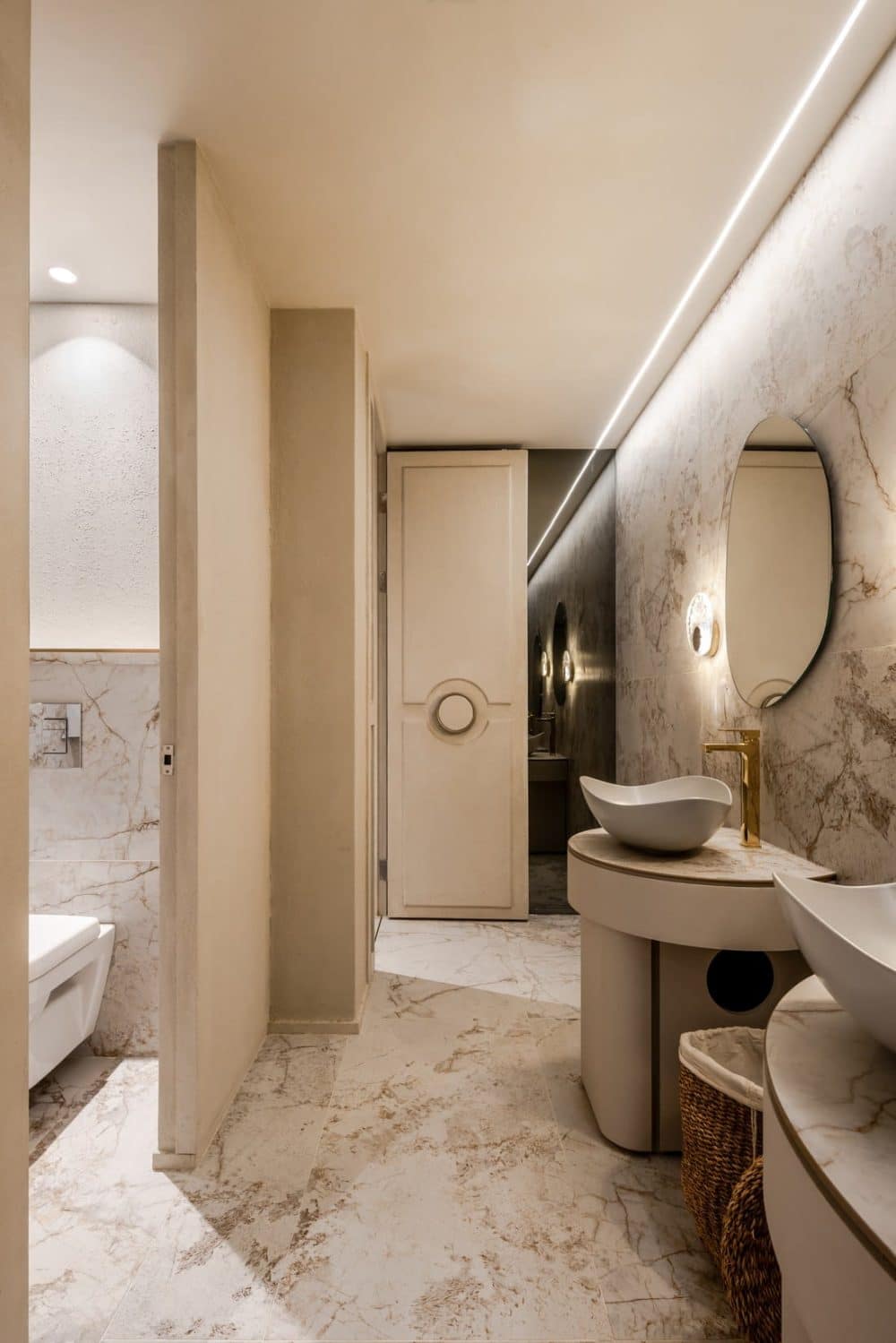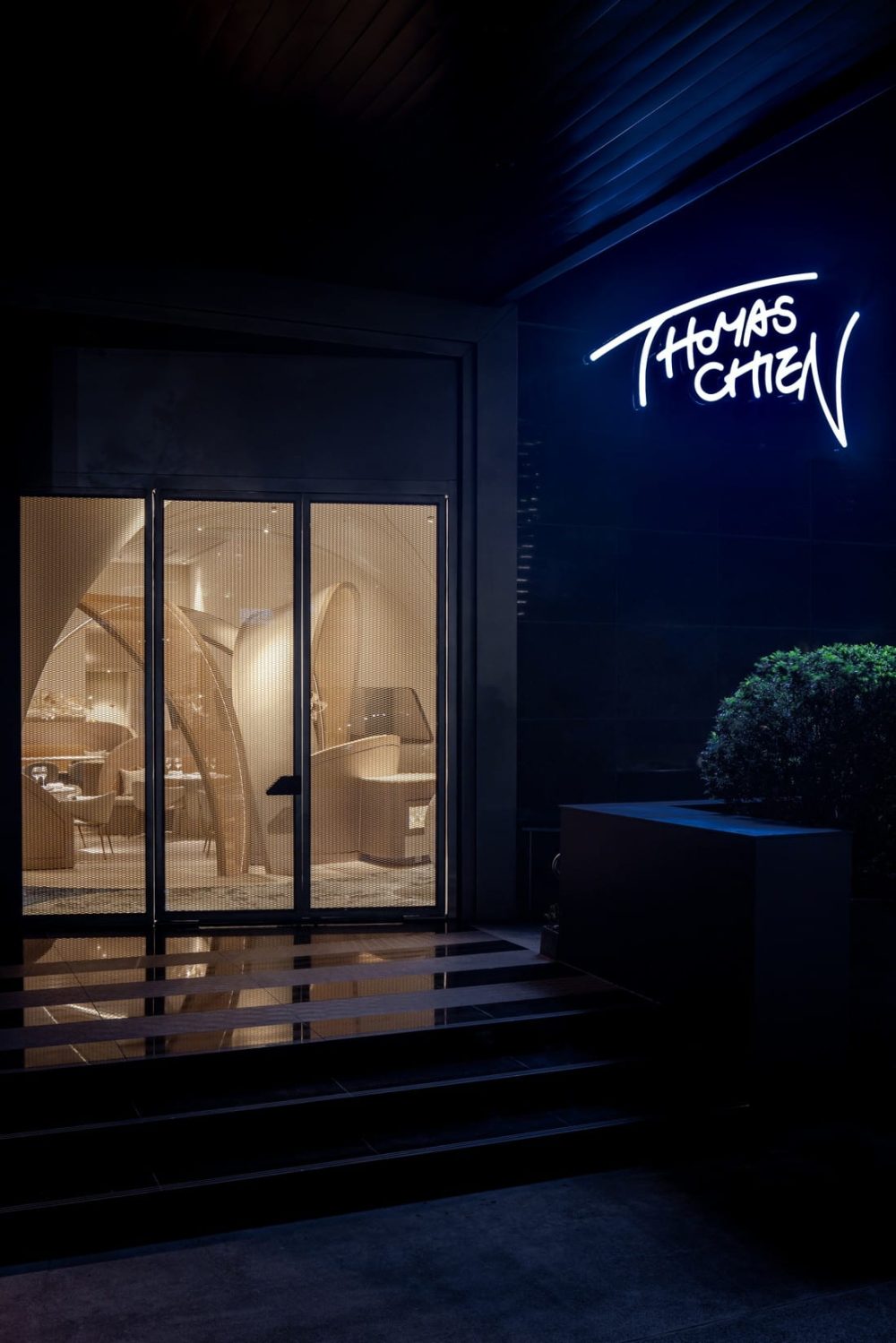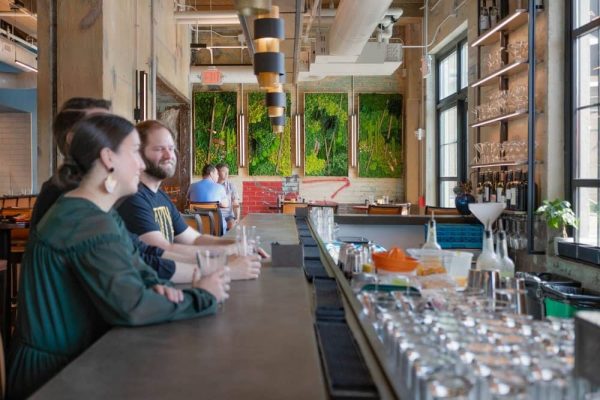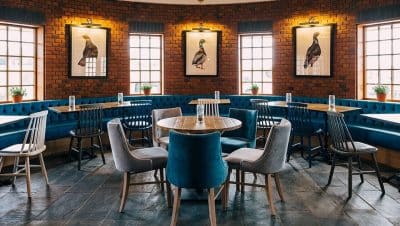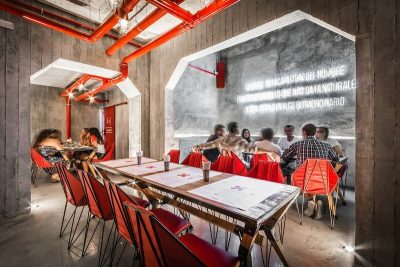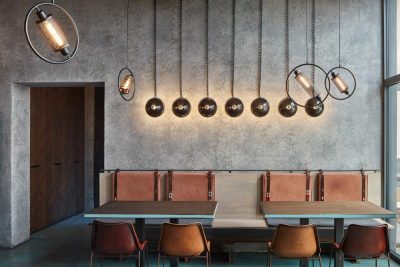
Project: Thomas Chien Restaurant
Interior Design: TaG Living
Interior Designers: WANG PIN-HO, WANG PIN-SHIAN, CHEN XIAO-XIAN
Client: THOMAS CHIEN
Location: Kaohsiung, Taiwan
Area: 198m2
Collaborative Process Technology: ZHOU JIA-LANG, HUANG ZHENG-DE, ZHENG ZHI-CHENG, GUO SHI-CHANG, GUO ZHEN-WEI
Collaborative Mechatronic Design: YANG SHAN-CHUN, DU WEN-QING
Collaborative Florist: YANG KENG-CHUAN
Collaborative 3D Printing: CHEN PO-CHUNG, CHEN GUO-XIN
Collaborative Recycling Materials Consultant: KUO WEN-YI
Construction Period: 2023.7-2023.9
Photo Credits: Yuchen Chao
Material: oyster shell. steel slags. abandoned fishing nets. 3D printing. rattan weaving. expanded metal mesh. wooden. steel piece. coral stone. red quinoa. linen. bronze
Located near Kaohsiung Port, once the third largest shipping port in the world, Thomas Chien Restaurant is the Michelin-green-starred restaurant in Taiwan that is the closest to a harbor. This French cuisine restaurant, deeply rooted in Kaohsiung city, creates its seasonal menu in alignment with changes in the local culture and customs of this city in proximity to the sea. It integrates southern Taiwan seafood with French cuisine and connects the sustainable supply chain of local peasants. This transforms the local ingredients in season into each delightful dining experience, becoming the must-visit gastronomic landmark in Kaohsiung.
“To delight the sense of taste is a fundamental skill that all cooks should master, but the distinct laying of visual representations is another pinnacle of culinary art” Executive Chef & Director, THOMAS CHIEN
TaG Living (also a local design team deeply rooted in Kaohsiung) perpetuated the brand concept, the design team focused on four themes: sustainability, cross-disciplinary collaboration, art, and eco-friendliness. Taiwan has a deep connection with the ocean, especially for Kaohsiung City. This geographical location surrounded by the sea, cultural traditions of seafood consumption, and the influence of maritime climate were pivotal factors guiding our design approach for this project. The characteristics of Kaohsiung’s harbor, ships, and classic French elements all come together to create six immersive zones within the 198 m² space: “Classic French Vault”, “Sail”, “Yacht Cabin”, “Deck Canopy”, “Coastal Bay”, and “Vault Cellar”. In the open-space setting, each zone tells its own story, serves unique functions, and conveys specific meanings. The city’s abundance of maritime elements is incorporated into the space to shape a circular flow in the layout with curved dynamic lines. Cues and clues are crafted into the details, transformed into the scene of the spatial domain, and set the stage for this journey.
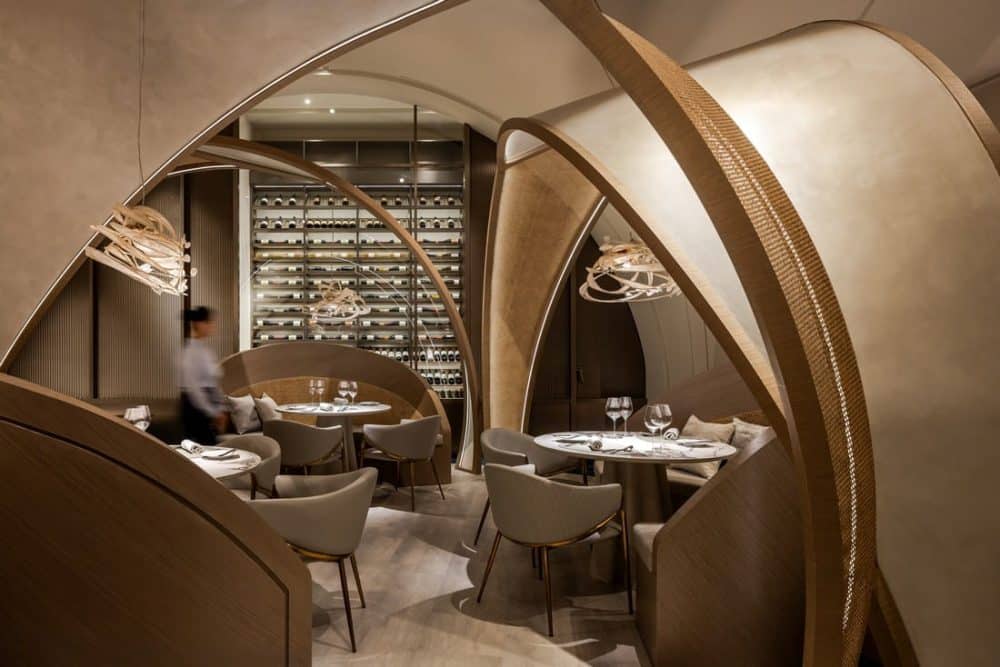
Waterflow
French and Taiwanese elements
At the sea-land border 500 meters away, the harbor breeze blows ashore, into the imagery of this city – blue sky, coastline, and ships. The local memories are blown through the metal mashes extended from the door panels, entering the room with the light and becoming the genes of the space. Pushing the golden door is like embarking on a journey. Like sheer screens, the door panels soften the high temperatures of sunlight during the day and allow interior lighting to highlight the elegant curves of the space at night through the gaps in the grid. Due to sunlight being refracted into the interior through the glass curtain wall across the street, causing prolonged discomfort with high temperatures and glare, we have modified the door panels to have a tilted angle. The retracting door panels, designed at a slant, offer visitors an elegant welcome. The silky cream-colored ambiance and the graceful curves immediately evident at the entrance appear in agreement with the refined taste of French cuisine. In this space, curves are heavily used to replace right angles, resembling the gentle forward movements of water.
“My professional background is in French cuisine, but along the journey in the culinary world, many childhood memories have accompanied my growth. These life experiences often lead me to discover intriguing intersections with cooking and create a continuous flow of inspiration” Executive Chef & Director, THOMAS CHIEN
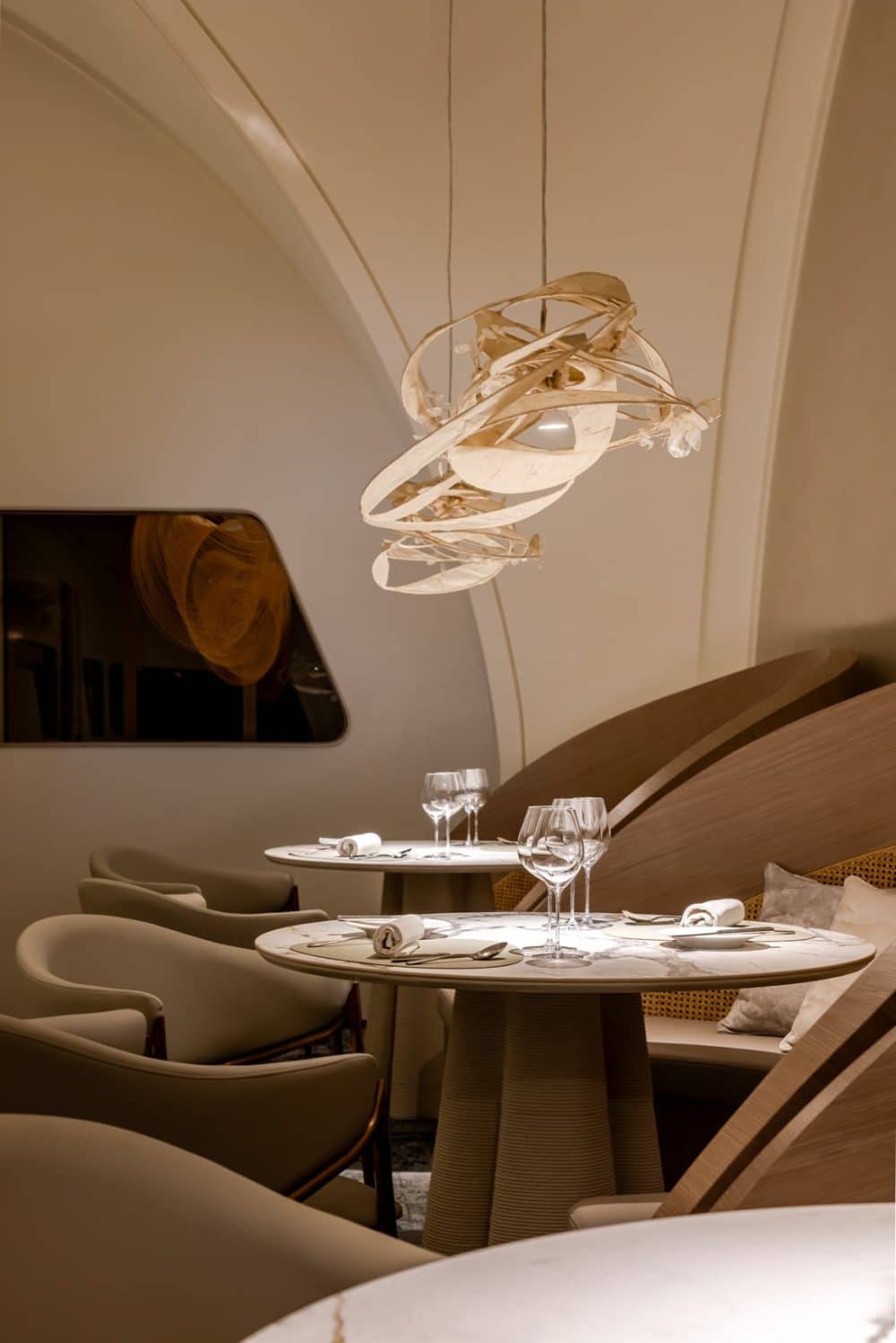
The culinary aesthetics not only pleases the eyes but also heals the soul. The act of dining is transformed into art. Sensory experiences are amplified and the space becomes a gallery of tastes. The three arc-shaped sculptures located in the center of the space are particularly eye-catching. The pergolas are woven with traditional rattan instead of metal mesh. They give a sense of transparency, with a substantial presence but not oppressive. The forms are inspired by the canopies of Roadside banquets, transforming Taiwanese memories into dual meanings with a local fun of “dining under the canopy” along a circular path. This design creates a sense of ritual and shapes the stage for a cross-cultural experience and the centerpiece of sight, it also ensures that the seating arrangement takes into account the practical needs for privacy and table distance. Without the display frames seen in museums and exhibitions, the dining space stages a visual performance. The pergola, woven with traditional craftsmanship, is like a small theater for performing arts. The process of enjoying exquisite dishes is elevated into an art feast, allowing visitors to participate.
The indoor vault which is made by CNC technology descends from the ceiling, resembling classical French architecture. The deconstructed classical lines are transformed into parabolic grooves scattered like flowing water, shaping into arched structures above the ground, to define distinct areas within the space and bend the linearity of time and space.
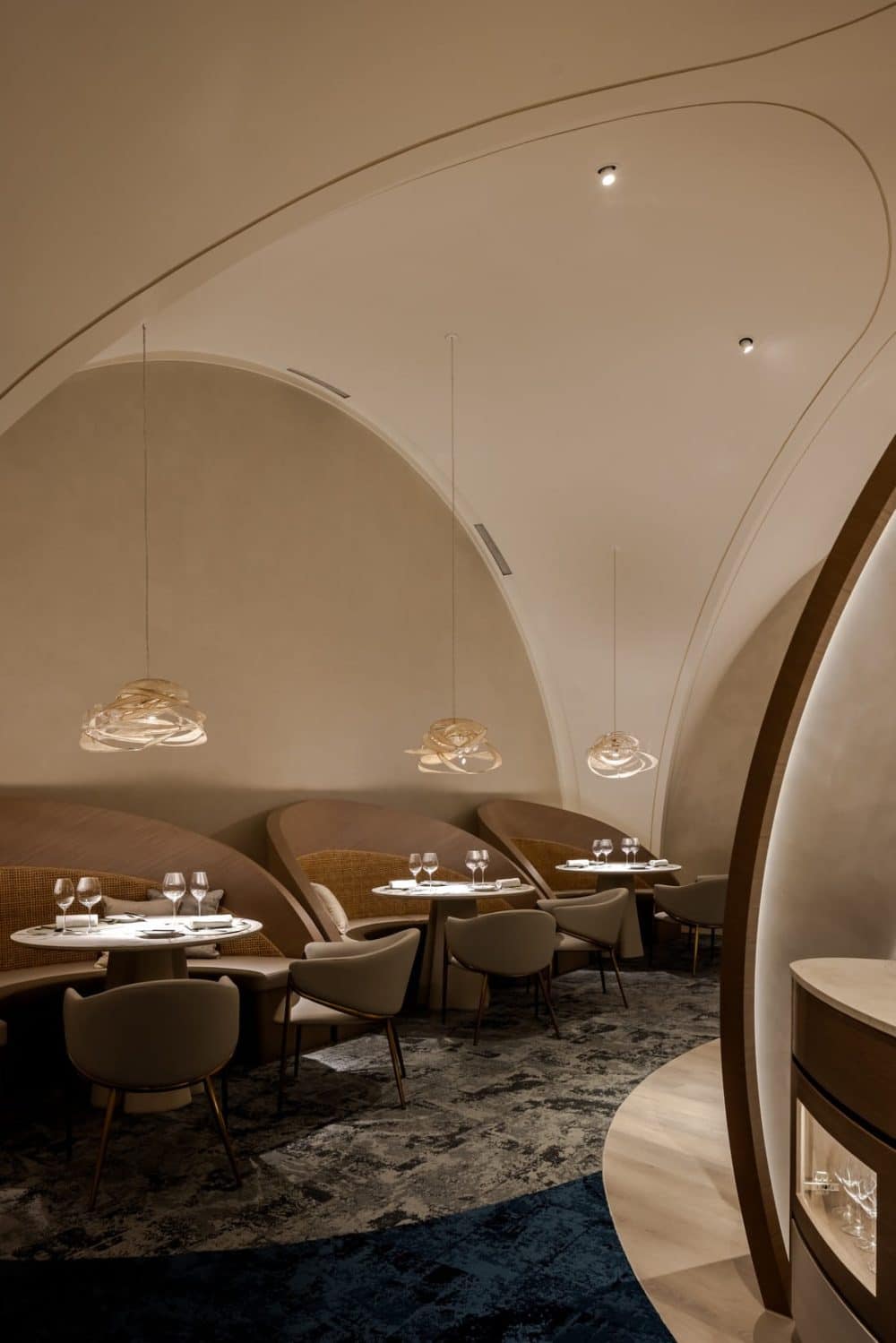
Sustainability and Technology
Food Wastes into paints
THOMAS CHIEN Restaurant has a signature dish called “Fragrance of Vegetables and Imitation Soils” which brings together over twenty items of local produce in season to represent the local ecosystem with ingredients. Embracing this ecological concept, TaG Living transforms local ingredients and wastes into reclaimed materials for the space. For instance, oyster shells after consumption, often considered a difficult waste for incinerators or landfills due to their high calcium content, are processed into natural concrete-free paints through roasting and grinding. With the use of trowel techniques, these materials are shaped into textured surfaces on the walls and pergolas. The finely-sculpted patterns become different layers within the space and align with the philosophy of sustainability.
Furnace slags into furniture through 3D printing
However, considering the possible insufficient supply of oyster shells and to reduce greenhouse gas emissions resulting from the use of indoor materials. TaG Living leveraged its expertise in industrial design and collaborated with a recycling materials PhD in research and development. Kaohsiung was an industrial city in its early days, so we collected from China Steel Corporation in Kaohsiung the furnace slags of the smelting process, combined these with oyster shells, and developed a series of counter, table legs, and boat-shaped chair through 3D printing and structural design. This kind of 3D printing is recyclable and we are committed to showcasing the innovative applications of material recycling and regeneration and demonstrating the creative diversity and the cross-disciplinary approach. 3D-printed counters, table legs, and public chairs in pottery-like appearance are simple yet sophisticated—exploring the spiritual realm after sensory exploration and practicing the curatorial theory by connecting each item.
An interesting detail is hidden in the table’s legs, inspired by the traditional French napkin fold. Soft napkins are turned into sturdy pillars, symbolizing the contrast between tradition and innovation and leaving an imagination between language and intention. Each displayed object in this space is considered to be an art with stories, each story represents a visual journey.
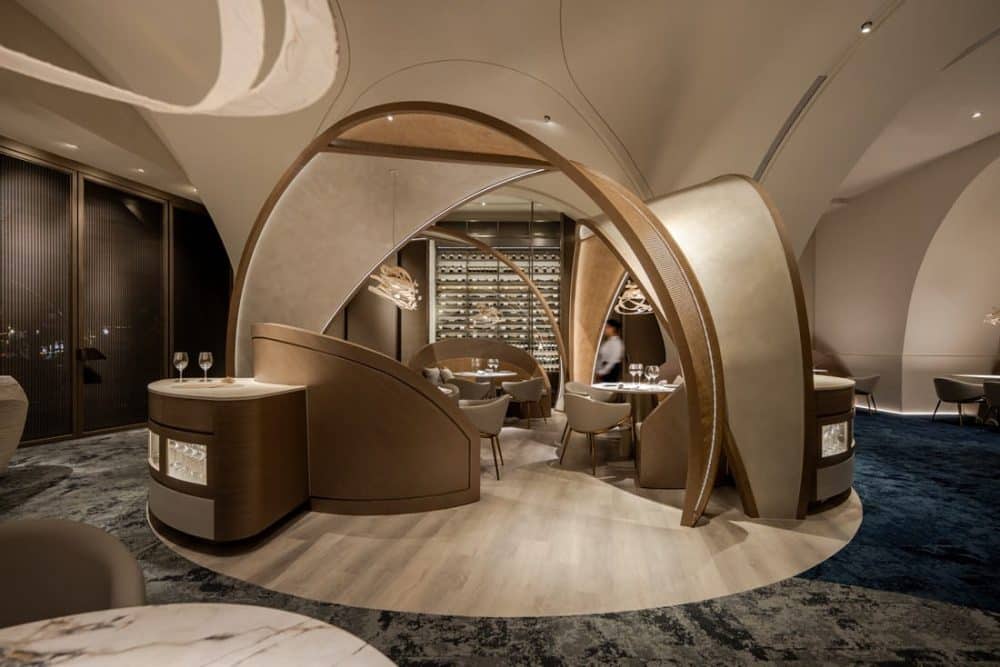
Abandonet fishing nets into carpets
Another case of material recycling involves ghost nets, the ecological threat of drifting in the sea. Through reprocessing techniques, these nets are fabricated into organic recycled carpets. The past and present lives of local wastes redefine their original value, in a journey of rebirth. In Kaohsiung which resides in memories, there is a harbor with gray sand and blue tides, soft and vast. The color tones of the carpet form the local topography and serve as the guide for the traffic flow of this space.
Island, Ocean, Sail Canvase into Lights
TaG Living also worked with local florists by using coarse hemp as frameworks and drawing inspiration from the waves washing over the harbor to deconstruct and reconstruct the imagery of islands, oceans, and sail canvases. Taiwan’s biodegradable materials such as coral stones, red quinoas, Azalea roots, and Salix argyracea skeleton leaves were pieced together to create layers, preserving the natural, organic, and flowing rhythms. This resulted in the creation of “Lustre Océan” and “Lustre Fleur” (pendant lights), echoing sustainability from the land. Technology, 3D printing, industrial design, wickerwork, and floral design are integrated to transform overlooked wastes in daily life into novel and original regenerated resources.

“With the passion and love for southern Taiwan… to creating a new dining experience for customers. No wonder this is a popular restaurant” MICHELIN Guide
When creating the materials for this project, our aim was not only to extract from the earth but also to give back to the environment. For example, we collected discarded oyster shells after consumption to prevent their difficulty in decomposing in the environment. Additionally, through beach clean-ups, we gathered discarded fishing nets from local harbors to reduce their threat to marine ecosystems, thus fostering a more sustainable marine environment and establishing a supply chain cycle between ecology and the restaurant. In the space crafted with silky cream-colored and elegant curves, the usage ratio of sustainable materials approaches 80%. We expect this restaurant to stand as a pioneer in the new culinary culture of Kaohsiung. Under its brand for sustainability, we extend from sourcing, seasonality, and carbon footprint of ingredients on the dining table to the regeneration, recycling, and carbon footprint beyond the dining space. The low-carbon principles of both ingredients and materials are put into practice, to promote organic spaces and local supply chains and become an exemplary model for friendly cuisine and sustainable environments. Like the diversity of cross-disciplinary collaborations that redefine environmental protection, the spirit of sustainability is shaped into the “space” through design. This space carries the local culture, sailing to the world so that visitors from various places can savor the creativity and enjoyment within and create their voyage of tastes.
